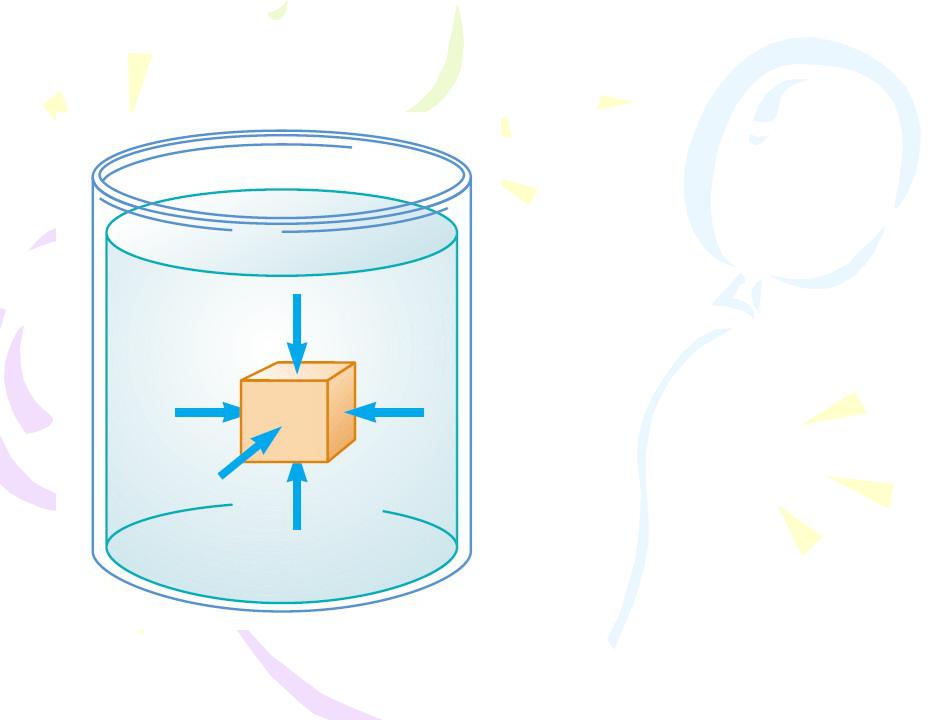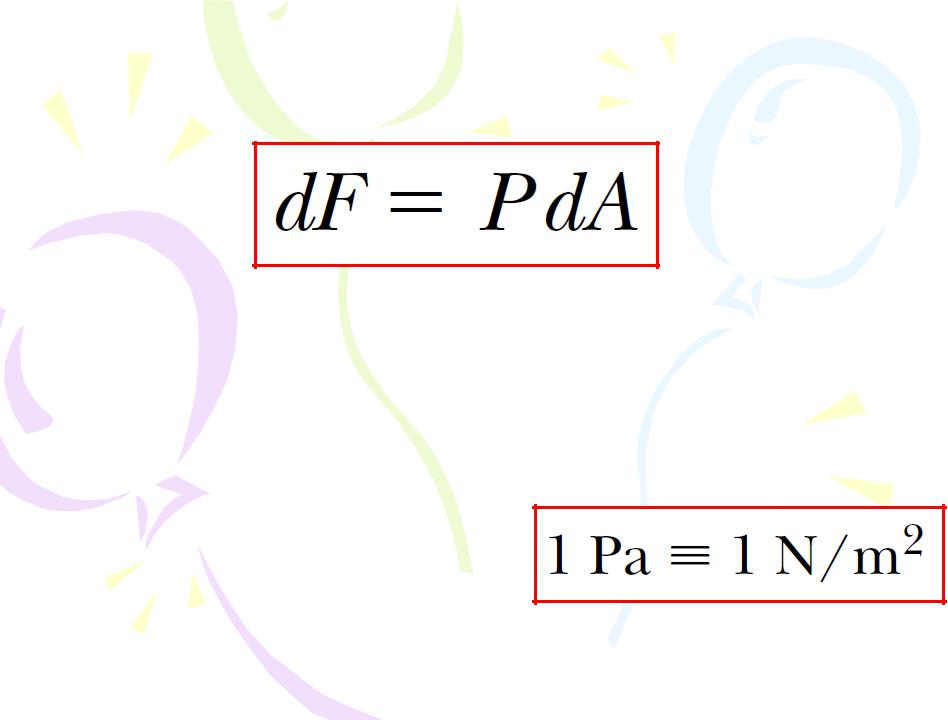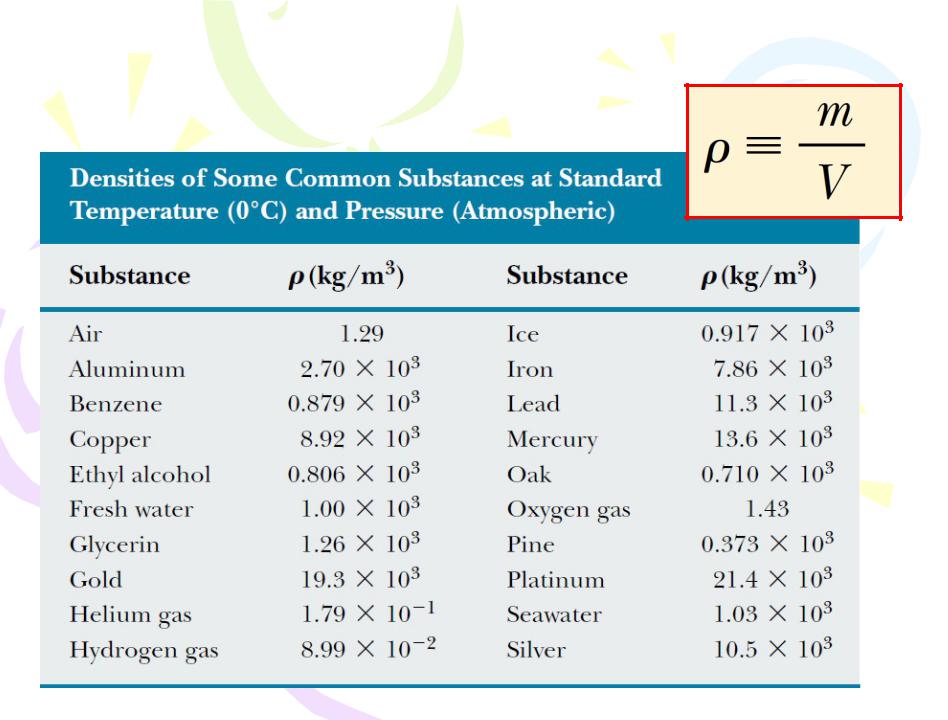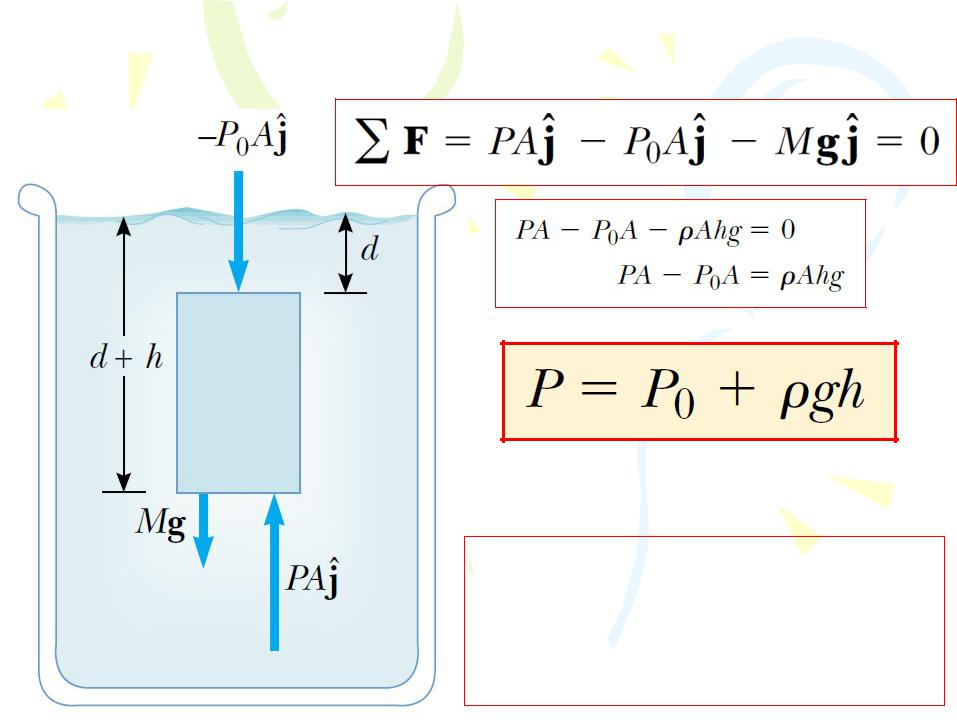
- •Course of lectures «Contemporary Physics: Part1»
- •Fluid Mechanics
- •Pressure
- •Pressure
- •If the pressure varies over an area, we can evaluate the infinitesimal force
- •Snowshoes keep you from sinking into soft snow because they spread the downward
- •Variation of Pressure with Depth
- •Variation of Pressure with Depth
- •Variation of Pressure with Depth
- •If the liquid is open to the atmosphere and P0 is the pressure
- •Figure 7.4 (a) Diagram of a hydraulic press. Because the increase in pressure
- •Pressure Measurements
- •Pressure Measurements
- •Buoyant Forces and
- •Buoyant Forces and
- •Buoyant Forces and
- •Case 1: Totally Submerged Object
- •Case 1: Totally Submerged Object
- •Case 2: Floating Object
- •Case 2: Floating Object
- •Fluid Dynamics
- •Fluid Dynamics
- •Fluid Dynamics
- •Fluid Dynamics
- •Fluid Dynamics
- •Fluid Dynamics
- •Fluid Dynamics
- •Bernoulli’s Equation
- •Bernoulli’s Equation
- •Bernoulli’s Equation
- •Bernoulli’s Equation
- •Other Applications of Fluid Dynamics
- •Other Applications of Fluid Dynamics
- •Other Applications of Fluid Dynamics
- •Quick Quiz 7.1
- •Quick Quiz 7.2
- •Quick Quiz 7.3
- •Quick Quiz 7.4
- •Quick Quiz 7.5
- •Quick Quiz 7.6

 Course of lectures «Contemporary Physics: Part1»
Course of lectures «Contemporary Physics: Part1» 
Lecture №9
Fluid Mechanics.
Pressure. Variation of Pressure with Depth. Pressure Measurements. Buoyant Forces and Archimedes's Principle. Fluid Dynamics. Bernoulli's Equation.

Fluid Mechanics
A fluid is a collection of molecules that are randomly arranged and held together by weak cohesive forces and by forces exerted by the walls of a container. Both liquids and gases are fluids. 
In our treatment of the mechanics of fluids, we do not need to learn any new physical principles to explain such effects as the buoyant force acting on a submerged object and the dynamic lift acting on an airplane wing. First, we consider the mechanics of a fluid at rest —that is, fluid statics. We then treat the mechanics of fluids in motion— that is, fluid dynamics. We can describe a fluid in motion by using a model that is based upon certain simplifying assumptions.

 Pressure
Pressure

Figure 7.1 At any point on the surface of a submerged object, the force exerted by the fluid is perpendicular to the surface of the object. The force exerted by the fluid on the walls of the container is perpendicular to the walls at all points.

Pressure

Figure 7.2 A simple device for measuring the pressure exerted by a fluid.
If F is the magnitude of the force exerted on the piston and A is the surface area of the piston, then the pressure P of the fluid at the level to which the device has been submerged is defined as the ratio
F/A:
(7.1)
Note that pressure is a scalar quantity because it is proportional to the magnitude of the force on the piston.

If the pressure varies over an area, we can evaluate the infinitesimal force dF on an infinitesimal surface element of area dA as
(7.2)
where P is the pressure at the location of the area dA. The pressure exerted by a fluid varies with depth. Therefore, to calculate the total force exerted on a flat vertical wall of a container, we must integrate Equation 7.2 over the surface area of the wall.
Because pressure is force per unit |
|
area, it has units of newtons per |
|
square meter (N/m2) in the SI |
|
system. Another name for the SI |
(7.3) |
unit of pressure is pascal (Pa): |

Snowshoes keep you from sinking into soft snow because they spread the downward force you exert on the snow over a large area, reducing the pressure on the snow surface.

Variation of Pressure with Depth
Table 7.1

Variation of Pressure with Depth
Figure 7.3 A parcel of fluid (darker region) in a larger volume of fluid is singled out. The net force exerted on the parcel of fluid must be zero because it is in equilibrium.

Variation of Pressure with Depth
(7.4)
That is, the pressure P at a depth h below a point in the liquid at which the pressure is P0 is greater
by an amount ρgh.

If the liquid is open to the atmosphere and P0 is the pressure at the surface of the liquid, then P0 is atmospheric pressure. In our
calculations and working of end-of-chapter problems, we usually take atmospheric pressure to be 
In view of the fact that the pressure in a fluid depends on depth and on the value of P0, any increase in pressure at the surface must
be transmitted to every other point in the fluid. This concept was first recognized by the French scientist Blaise Pascal (1623–1662) and is called Pascal’s law: a change in the pressure applied to a fluid is transmitted undiminished to every point of the fluid and to the walls of the container.
